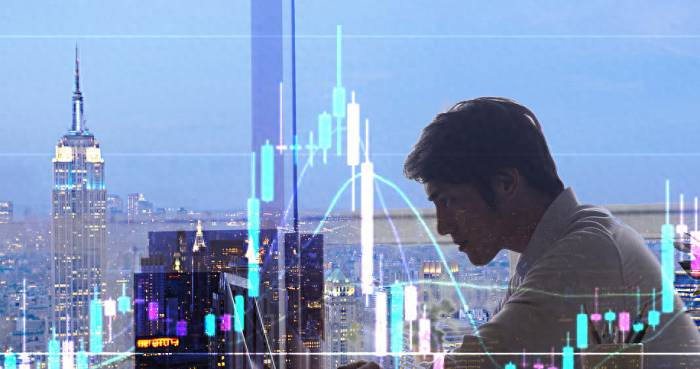The "inner world" determines your trading achievements
2024-04-21
For traders, the world can be divided into two: one is the objectively existing external world, which is the market environment we are in, and we cannot change it; the other is the inner world, which is the world that each trader can truly control and manage.
Traders' first world: the external market
This world exists outside the trader himself, composed of countless people participating in the market. It is a huge, self-sufficient entity with independent operating rules. Traders can usually feel the operating rules of this "self-sufficient entity," but they cannot accurately capture them.
Traders in this world, their trading activities will affect their perception of the market. Once traders determine the perceived rules and try to sublimate them into theories, the market's pulse and operating rules have probably changed. In other words, traders cannot set rules or budget trajectories, but can only follow the path it has taken.
The unpredictability of the market is like "blind men touching an elephant" for traders. The traders are the blind men, and the elephant is the external market. We can feel some signs of the market, but it is difficult to fully understand it. Even if a person with clear vision does not change their perspective, they can only see one side of the elephant, which is also an incomplete and one-sided impression.
Advertisement
The market does not care who you are, no matter how you struggle, it has no feelings. If you are lucky, you may make money; if you are unlucky, you may be worn out by it. The market also does not care about the clever methods and strategies you use for trading, because for the external market, everything will not work.
In the market, the only certainty is uncertainty. Therefore, to survive in this market, what is important is not how high your expected accuracy rate is, but what measures you have if your expectations are wrong. In other words, the key to survival in the market lies in: how to deal with your wrong positions.
Traders' second world - the inner world
People who trade have heard a saying - "trade your plan," in fact, a more accurate expression is "trade your inner world," "trade your heart." Because for traders, the external market is always out of reach and invisible. What traders can truly control and manage is their own inner world.The perceptions, experiences, and feelings of each individual constitute their unique "inner world." Conversely, each person's world also shapes everything they perceive, experience, and feel. In short, what you see is a reflection of what's inside you. The "inner world" of each person varies greatly, yet for each individual, it is the only and the true reality.
In general, there are various types of traders in the market, and their "inner worlds" can be broadly categorized into the following five types:
1. The world of confusion. These traders are novices, accounting for about one-third to half of the market participants. Because they know nothing about the market, they are often referred to as "fodder."
2. The world of chaos. These traders learn everything, attend various lectures and training courses, and are fond of gossiping, reading newspapers, and watching various trading-related reports. They can tell you the specific basis for any operation, but the reasons for their operations are diverse.
3. The world of loss. The above two types of traders account for about sixty to seventy percent of all traders. Among the remaining thirty to forty percent of traders, sixty to seventy percent are in the "world of loss."
They always engage in pure theory, "talking about war on paper," and piece together a seemingly perfect trading system with various seemingly perfect indicators. Their main task is not trading but "creating a system," wishfully pursuing the "Holy Grail" that never exists.
4. The fragile world. These traders account for about seventy to eighty percent of the remaining ten percent. They have weak inner strength, lack of security, poor stress resistance, and it is difficult for them to hold on. For example, when he is ready to build a position according to the trading system signal, a piece of gossip suddenly comes, and he will immediately terminate the position out of fear.

Such traders have an inner world that is fragile and vulnerable to attack. They lack courage, fear both losing and winning, cannot withstand losing, and dare not win big when they win, enjoying the comfort of a small fortune. In the years to come, they are likely to fail due to insufficient reserves.
5. The simple world. These traders account for less than one or two percent of all traders. They advocate simplicity, and their understanding of reality is free from idealism and self-destruction. Like farming, they are clear about their position, their weight, and what kind of harvest they will get by planting what. Better masters, in good years, try to harvest more and store more reserves, and in bad years, they try to avoid a complete failure.The "external world" is something traders cannot control or take charge of, while the "internal world" is something traders can control and autonomously build. Trading is a path of cultivation, where everyone can independently decide what kind of "inner world" they have. What your "inner world" is like, that is what your entire world is like, and that is what your life is like.
If the core of surviving in the "external market" lies in how to deal with incorrect positions, then to get through the difficult times in the trading "inner world," the core lies in building sufficient psychological construction. Only by properly controlling one's own "inner world" can we add an extra layer of protection to trading.
Comments